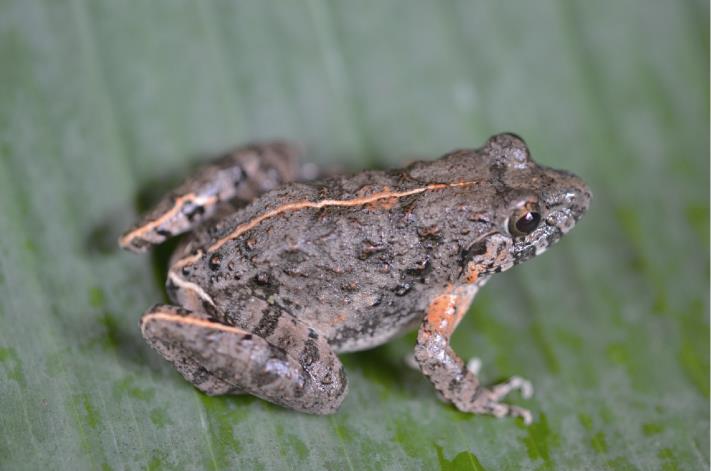According to the online data from American Museum of Natural History (http://research.amnh.org/herpetology/amphibia/index.html) (dated at 2017-5-30), there are in total of 41 species of the genus Fejervarya (family Dicroglossidae). Among them, eight species can be found in Thailand.
Recently, from the specimens collected from Ban Tha Khanun, Thong Pha Phum District, Kanchanaburi Province, Thailand, a new species of rain-pool frog, Fejervarya muangkanensis sp. nov., was discovered and named by the research group of Dr. CHE Jing (Kunming Institute of Zoology, CAS).
The five collected specimens of the species were deposited at KIZ, CAS. The total genomic DNA was extracted from the specimens and went through molecular and phylogenetic analysis. The unique de novo sequence was deposited in GenBank. The new species was identified by combing the results of both phylogenetic and morphological examinations. The substantial genetic divergence revealed by the phylogenetic analysis suggested that this species discovered in Thong Pha Phum is an undescribed new species. The unique morphological features of this new species including slightly pointed snout, comparatively poorly developed foot webbing, lateral line system in adult absent, femoral glands absent; tympanum comparatively small, etc..
The F. sirindhornae sp. nov. usually using small swamps as the natural habitats. In males, the dorsal ground color varies from brown to dark green, and transverse black bands are present on the dorsal surface of the thigh, tibia, and tarsus region, whereas, in females, the mid-dorsal stripe is orange, and bands run from the anterior side between the eyes to the vent and from the posterior side of the thigh to the tarsus; forearm has prominent orange spots, nearly touching the subtympanic orange streak.
The discovery of Fejervarya muangkanensis sp. nov. suggests that the biodiversity of Thailand is still under exploration and enviornmental measures should be reinforced. The main findings of this study are published in Zoological Research.

Figure: Dorsolateral view of a female paratype Fejervarya muangkanensis sp. nov. in life (photo by Chatmongkon Suwannapoom)
(By SuQing Liu)
Contact information
CHE Jing
Kunming Institute of Zoology, CAS
E-mail: chej@mail.kiz.ac.cn
